A
Auto Express
Guest
The Jeep Renegade is the smallest car in the Jeep range, yet it's still packed with the US company's 4x4 DNA. With adventurous names like Longitude and Trailhawk used for trim levels, and a rugged look that carries Jeep's traditional seven-bar grille and plenty of chunky styling cues, there's no mistaking the Renegade for any other small SUV for sale today.
In reality, the Renegade uses the same platform as the Fiat 500X - which can trace its roots to the Alfa Romeo Giulietta - and the Renegade was one of the first products of the partnership between Fiat and Chrysler. It first arrived at the end of 2014 for the 2015 model year, while it was given a fairly comprehensive update in 2019. It needed an update because competition in the small SUV class is fiercer than ever.
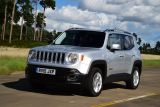
image
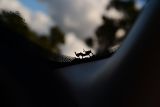
image
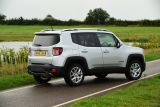
image
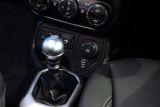
image
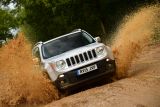
image
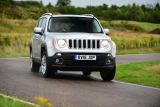
image
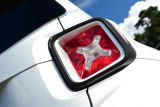
image
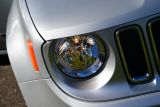
image
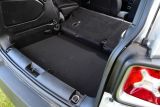
image
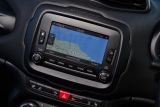
image
Rivals for the Renegade include its 500X sister model (which is built in the same factory in Italy), as well as the Mazda CX-3, MINI Countryman, Audi Q2, Toyota C-HR and Honda HR-V. In terms of size, the Renegade falls somewhere between the smallest Nissan Juke-sized SUVs and compact models such as the Nissan Qashqai, so you could consider it over many other models, whether you need something smaller than a compact model, or slightly larger than a small car.
Prices for the Jeep Renegade start at just under £23,000, which is at the higher end of the spectrum for small SUVs, but all cars come pretty well equipped. Trim lines run through Longitude, Night Eagle, Limited, S and Trailhawk, and all cars feature cruise control, lane departure warning and traffic sign recognition, while a DAB Radio and Bluetooth are also included.
At the top of the range, the Trailhawk features four-wheel drive, hill descent control and off-road biased tyres to boost its ability. That 4x4 system is part-time and features Active Drive, which transfers torque to the rear wheels only when sensors detect that the front wheels are slipping. It also has low-range ‘crawler’ gearing and diff locks, while Selec-Terrain optimises the diffs to suit snow, mud or rocky ground. This model is pretty expensive, though, at just over £32,000, so you'll really need its off-road skills to justify the outlay.
Petrol power in the Renegade range includes a 118bhp 1.0-litre, three-cylinder unit, paired with a six-speed manual transmission, and a larger capacity 1.3-litre, four-cylinder engine, mated to a six-speed DDCT auto 'box delivering 148bhp. Both of these petrol versions are front-wheel drive only.
For those seeking four-wheel-drive fun, Jeep offers an upgraded version of the 1.3-litre petrol unit with 177bhp, while there's now just a single diesel engine available - the 168bhp 2.0-litre Multijet II. Both 4x4 models use a nine-speed automatic gearbox.
The looks won't be to all tastes, but in a class of curvy crossovers, the square-edged Jeep Renegade certainly stands out. It's also one of the few cars in the class that offers genuine off-road ability, although it comes at a slight expense to on-road performance.
That's not to say it's completely inept on the road. But if you’re merely after extra space and a commanding driving position, rather than exceptional mud-plugging prowess, there’s a sense that the Renegade is just a little too focused on the rough stuff compared to what UK buyers will actually use it for. It also gets rather pricey the further up the range you go.
• Best crossovers to buy
Overall, there's no doubt that the Renegade drips with character and appeal all on its own, but it’s not the greenest, best value or nicest-driving choice in its class. So while it’s sure to be a stronger seller than bigger models in the Jeep range, it's not destined to set the SUV/crossover sales charts alight.
Social Embed
youtube://v/OqHe_bxalCE
How impressive the Renegade is to drive depends entirely on the environment you’re in. If you dare to venture off-road, you’ll discover the most capable all-terrain vehicle in the compact crossover class.
Adaptive all-wheel-drive with settings for different surfaces, plenty of ground clearance and good body control mean the little Jeep is almost unstoppable off-road, with much of the light-on-its-feet feel that a Fiat Panda 4x4 enjoys.

image

image

image

image

image

image

image

image

image

image
If you want a small car that can tackle fearsome terrain, but a Suzuki Jimny is just that little bit too small, look no further than the Renegade, which is excellent off-piste. Whether on or off-road, the six-speed gearbox provides positive and enjoyable shifts, while the smooth nine-speed automatic is a real winner, too.
The Jeep isn’t badly compromised on the road by how capable it is off it. In fact, the Renegade Trailhawk, with its chunkier tyres, has the best ride in the range. Plus, the car doesn’t lean too much in corners and grip remains superb. However, the steering is numb, the gearbox is notchy and the engines are unremarkable. So while the Renegade is competent overall, it can't match the MINI Countryman, Mazda CX-3 or Nissan Juke for driving fun, nor the Nissan Qashqai for refinement.
As drivers spend most of their time on the road, rather than mud-plugging, it feels as if Jeep has lost sight a little of what most customers actually want from this type of car.
Engines
Jeep offers the Renegade with a choice of three petrol options and a single diesel. For typical buyers wanting a combination of strong performance and decent fuel economy, the diesel will be of most interest.
The torquey 168bhp 2.0-litre MultiJet helps make the Trailhawk model especially potent off-road; coupled with the nine-speed auto box and low-ratio 4x4, it ensures this version of the Renegade feels unstoppable. The 0-62mph sprint takes just 8.9 seconds, with a maximum speed of 122mph.
The 1.0-litre petrol is the least powerful engine in the range with 118bhp, but is far better suited to the kind of stop-start town driving so many Renegade buyers will be familiar with. For those wanting a bit more oomph, Jeep offers a 1.3-litre, four-cylinder unit with two power outputs - 148bhp and 177bhp. The latter offers the best performance, with a 0-62mph time of 8.5 seconds and a 125mph top speed.
While a large-capacity petrol version of the Jeep Renegade is available in some markets, the UK gets the more efficient petrol and diesel engine options, and there is enough of a variety to cater for most needs.
The most economical Renegade models are the front-wheel drive petrol versions - the 1.0-litre petrol with a six-speed manual gearbox returns 52.3mpg, although the more powerful 148bhp 1.3-litre petrol is only just behind at 51.3mpg.
The 180bhp 4x4 petrol is the worst performer, only able to deliver a maximum 40.3mpg, while the 2.0-litre 4x4 diesel sits in the middle of the range for economy with 44.8mpg.

image

image

image

image

image

image

image

image

image

image
Emission levels are not great - ranging from 151g/km to 165g/km for front-wheel drive models, and up to 196g/km for the 4x4 versions. So company car costs will be a little higher than they are for some rivals, but at least road tax from year two onwards is the same for all models.
Insurance groups
The Jeep Renegade range isn’t too badly hit on the insurance front, with entry-level two-wheel-drive cars sitting in group 10. The top-spec S petrol model sits in group 19, while the Trailhawk diesel occupies group 18. For comparison, the Nissan Juke line-up ranges from insurance group eight to a hefty group 21. The Fiat 500X falls into groups seven to 16.
Depreciation
The depreciation curve doesn't look too bad for the Renegade. Our experts predict that it'll retain 38-43 per cent of its new value after three years, which is better than the mechanically identical Fiat 500X, but falls behind cars such as the Mazda CX-3, Toyota C-HR and Honda HR-V.
While the Jeep Renegade and Fiat 500X share a platform and running gear, the Jeep brand characteristics come through strongly on the Renegade. The design has been conceived to invoke plenty of heritage from iconic Wrangler models, as well as the styling themes of the premium Grand Cherokee SUV.
Jeep says the Renegade’s polarising, toy-like looks combine the sophistication of the Grand Cherokee with the rugged appeal of the classic Wrangler. The main challenge was to set the car apart from some of its ‘cuter’ rivals in the crossover class – hence the bluff ‘seven-slot’ nose, squared-off wheelarches and bulbous tail-lights inspired by old US Army petrol cans.

image

image

image

image

image

image

image

image

image

image
The eccentric bodywork and dropping beltline evoke cues of Jeep’s back catalogue, but the overall effect is very spec-sensitive. In darker, military-like colours, and especially in Trailhawk guise with more off-road friendly bumpers and coloured towhooks, the Renegade looks quite purposeful. However, the standard versions are a bit dumpy, although the 2018 update has helped this a little.
Inside, Jeep squeezes in even more character touches. The Jeep ‘face’ of round headlights and the seven-slot grille is embossed into the rear-view mirror, speaker surrounds and the tailgate. The vent surrounds are apparently inspired by base-jumping equipment, the pod-like central vents by ski goggles, and you even get a mud splatter graphic instead of a redline in the rev counter.
If you’ve stepped out of a more mature Nissan Qashqai or Skoda Yeti, the Renegade feels like another world, but the sense of fun of, say, a MINI is definitely here, whether you like it or not.
Sat-nav, stereo and infotainment
The Renegade’s funky cabin was given an update in 2018, so it now gets the same hi-tech features as the Cherokee. As standard there's a 8.4-inch touchscreen interface and a 3.5-inch TFT screen, which is upgraded to a 7-inch colour display on Limited models and above.

image

image

image

image

image

image

image

image

image

image
Standard kit includes Apple CarPlay and Android Auto, although built-in sat-nav is also included. You get the usual array of connectivity, including USB sockets, 12v charging and Bluetooth phone connections.
The upright, boxy body means the Renegade offers a decent amount of space for five people. But in spite of some very obvious ‘design’, the interior can feel a little low-rent, with an all-black dash and some less-than-appealing plastics. Still, there are some colourful trim options available to brighten things up.
Standard equipment on basic cars includes electric mirrors, plus dual-zone air-con and rear parking sensors. If you go for the Limited version, you get useful touches like automatic wipers and lights as well.
The parking sensors are a definite necessity in a car that’s surprisingly difficult to park considering its compact dimensions, as the thick front and rear pillars make vision awkward at times. Otherwise the Renegade is reasonably practical, with useful storage in the glovebox and a couple of cup-holders between the front seats.
Trailhawk models are designed with a more utilitarian feel inside and out; they’re set apart by details like rubber mats instead of carpets in the footwells and rugged exterior trim.
Backing up these tough looks are a number of other useful changes such as reshaped bumpers and a 20mm increase in ride height, giving the Renegade Trailhawk better off-road clearance. There are also underbody skid plates to protect vital parts should you bash a rock. This model benefits from improved fording ability, and – perhaps surprisingly – has the best ride quality on the road due to its chunky tyres, which absorb bumps.
Size
Jeep has cannily designed the Renegade with dimensions to sit between supermini-sized compact crossovers and larger cars such as the Ford Kuga and new Hyundai Tucson. That, along with its boxy shape, means interior space is a relatively strong suit.
Leg room, head room & passenger space
The doors open outwards by 70 degrees at the front and 80 degrees at the rear, aiding access, while the raised ride height means the Renegade isn’t difficult to climb into.

image

image

image

image

image

image

image

image

image

image
While there are three seatbelts in the back, the middle seat is quite narrow and knee room is in short supply for all rear passengers. Head and shoulder room is better, though, and Isofix child seat mountings are standard.
Boot
The boot offers a competitive 351 litres of space with the seats in place, and up to 1,297 litres when they’re folded. This is similar to rivals like the Nissan Juke and the MINI Countryman – the latter has an impressive 450-litre boot capacity, but only 1,170 litres with the seats folded.

image

image

image

image

image

image

image

image

image

image
Only top-spec Renegade models are available with 40:20:20 split folding seats as an option, and the load space isn’t the easiest to use, as the boot lip can be awkward. On the plus side, there’s a reversible floor, giving you a ‘wipe clean’ option.
Towing
The 2.0-litre diesel Renegade is a decent tow car, with a 1,500kg towing capacity, although this figure drops to 1,250kg for the 1.0-litre petrol engine.
With products like the Renegade, Jeep is looking to improve on its patchy reliability record, but neither the Renegade model nor the Jeep brand featured in our latest Driver Power customer satisfaction survey.
The Renegade is based on the Fiat 500X crossover, and given the parts sharing between the two brands, we’re not reassured by the ownership satisfaction potential. So while we look forward to seeing the car make an appearance in future Driver Power charts, we don’t hold out too much hope for a strong showing.

image

image

image

image

image

image

image

image

image

image
Back in 2014, Euro NCAP awarded the Renegade a full five-star rating for safety, however as a mark of ever-improving standards in this area, Jeep's small SUV only managed a three-star rating when retested in 2019 under more stringent testing. Although adult and child protection achieved 82% and 84% scores, respectively, pedestrian safety was poor in some areas.
However, all models benefit from a high-strength steel body construction, a multitude of airbags and other features such as traffic sign recognition, a lane-departure warning system and rollover mitigation that helps to prevent the car tipping over during emergency manoeuvres.
Optional safety kit includes automatic emergency braking, blind-spot warning systems and rear cross protection, which alerts you to vehicles approaching the back of the car while reversing.
Warranty
The Renegade comes with a three-year warranty as standard, although a five-year warranty is offered if you buy a Renegade on finance. Buyers can pay for extra cover, too, up to a maximum of seven years or 100,000 miles. The five-year cover also adds five years of roadside assistance, and three years' servicing, but also puts a 15,000-mile annual mileage limit in place.
Servicing
Services are required annually or every 12,500 miles, which is similar to the competition. Parts for the Renegade shouldn’t be too expensive, either, given the component sharing with high-volume Fiat models.
For an alternative review of the latest Jeep Renegade SUV visit our sister site carbuyer.co.uk
Continue reading...
In reality, the Renegade uses the same platform as the Fiat 500X - which can trace its roots to the Alfa Romeo Giulietta - and the Renegade was one of the first products of the partnership between Fiat and Chrysler. It first arrived at the end of 2014 for the 2015 model year, while it was given a fairly comprehensive update in 2019. It needed an update because competition in the small SUV class is fiercer than ever.
image

image

image

image

image

image

image

image

image

image
Rivals for the Renegade include its 500X sister model (which is built in the same factory in Italy), as well as the Mazda CX-3, MINI Countryman, Audi Q2, Toyota C-HR and Honda HR-V. In terms of size, the Renegade falls somewhere between the smallest Nissan Juke-sized SUVs and compact models such as the Nissan Qashqai, so you could consider it over many other models, whether you need something smaller than a compact model, or slightly larger than a small car.
Prices for the Jeep Renegade start at just under £23,000, which is at the higher end of the spectrum for small SUVs, but all cars come pretty well equipped. Trim lines run through Longitude, Night Eagle, Limited, S and Trailhawk, and all cars feature cruise control, lane departure warning and traffic sign recognition, while a DAB Radio and Bluetooth are also included.
At the top of the range, the Trailhawk features four-wheel drive, hill descent control and off-road biased tyres to boost its ability. That 4x4 system is part-time and features Active Drive, which transfers torque to the rear wheels only when sensors detect that the front wheels are slipping. It also has low-range ‘crawler’ gearing and diff locks, while Selec-Terrain optimises the diffs to suit snow, mud or rocky ground. This model is pretty expensive, though, at just over £32,000, so you'll really need its off-road skills to justify the outlay.
Petrol power in the Renegade range includes a 118bhp 1.0-litre, three-cylinder unit, paired with a six-speed manual transmission, and a larger capacity 1.3-litre, four-cylinder engine, mated to a six-speed DDCT auto 'box delivering 148bhp. Both of these petrol versions are front-wheel drive only.
For those seeking four-wheel-drive fun, Jeep offers an upgraded version of the 1.3-litre petrol unit with 177bhp, while there's now just a single diesel engine available - the 168bhp 2.0-litre Multijet II. Both 4x4 models use a nine-speed automatic gearbox.
The looks won't be to all tastes, but in a class of curvy crossovers, the square-edged Jeep Renegade certainly stands out. It's also one of the few cars in the class that offers genuine off-road ability, although it comes at a slight expense to on-road performance.
That's not to say it's completely inept on the road. But if you’re merely after extra space and a commanding driving position, rather than exceptional mud-plugging prowess, there’s a sense that the Renegade is just a little too focused on the rough stuff compared to what UK buyers will actually use it for. It also gets rather pricey the further up the range you go.
• Best crossovers to buy
Overall, there's no doubt that the Renegade drips with character and appeal all on its own, but it’s not the greenest, best value or nicest-driving choice in its class. So while it’s sure to be a stronger seller than bigger models in the Jeep range, it's not destined to set the SUV/crossover sales charts alight.
Social Embed
youtube://v/OqHe_bxalCE
How impressive the Renegade is to drive depends entirely on the environment you’re in. If you dare to venture off-road, you’ll discover the most capable all-terrain vehicle in the compact crossover class.
Adaptive all-wheel-drive with settings for different surfaces, plenty of ground clearance and good body control mean the little Jeep is almost unstoppable off-road, with much of the light-on-its-feet feel that a Fiat Panda 4x4 enjoys.
image

image

image

image

image

image

image

image

image

image
If you want a small car that can tackle fearsome terrain, but a Suzuki Jimny is just that little bit too small, look no further than the Renegade, which is excellent off-piste. Whether on or off-road, the six-speed gearbox provides positive and enjoyable shifts, while the smooth nine-speed automatic is a real winner, too.
The Jeep isn’t badly compromised on the road by how capable it is off it. In fact, the Renegade Trailhawk, with its chunkier tyres, has the best ride in the range. Plus, the car doesn’t lean too much in corners and grip remains superb. However, the steering is numb, the gearbox is notchy and the engines are unremarkable. So while the Renegade is competent overall, it can't match the MINI Countryman, Mazda CX-3 or Nissan Juke for driving fun, nor the Nissan Qashqai for refinement.
As drivers spend most of their time on the road, rather than mud-plugging, it feels as if Jeep has lost sight a little of what most customers actually want from this type of car.
Engines
Jeep offers the Renegade with a choice of three petrol options and a single diesel. For typical buyers wanting a combination of strong performance and decent fuel economy, the diesel will be of most interest.
The torquey 168bhp 2.0-litre MultiJet helps make the Trailhawk model especially potent off-road; coupled with the nine-speed auto box and low-ratio 4x4, it ensures this version of the Renegade feels unstoppable. The 0-62mph sprint takes just 8.9 seconds, with a maximum speed of 122mph.
The 1.0-litre petrol is the least powerful engine in the range with 118bhp, but is far better suited to the kind of stop-start town driving so many Renegade buyers will be familiar with. For those wanting a bit more oomph, Jeep offers a 1.3-litre, four-cylinder unit with two power outputs - 148bhp and 177bhp. The latter offers the best performance, with a 0-62mph time of 8.5 seconds and a 125mph top speed.
While a large-capacity petrol version of the Jeep Renegade is available in some markets, the UK gets the more efficient petrol and diesel engine options, and there is enough of a variety to cater for most needs.
The most economical Renegade models are the front-wheel drive petrol versions - the 1.0-litre petrol with a six-speed manual gearbox returns 52.3mpg, although the more powerful 148bhp 1.3-litre petrol is only just behind at 51.3mpg.
The 180bhp 4x4 petrol is the worst performer, only able to deliver a maximum 40.3mpg, while the 2.0-litre 4x4 diesel sits in the middle of the range for economy with 44.8mpg.
image

image

image

image

image

image

image

image

image

image
Emission levels are not great - ranging from 151g/km to 165g/km for front-wheel drive models, and up to 196g/km for the 4x4 versions. So company car costs will be a little higher than they are for some rivals, but at least road tax from year two onwards is the same for all models.
Insurance groups
The Jeep Renegade range isn’t too badly hit on the insurance front, with entry-level two-wheel-drive cars sitting in group 10. The top-spec S petrol model sits in group 19, while the Trailhawk diesel occupies group 18. For comparison, the Nissan Juke line-up ranges from insurance group eight to a hefty group 21. The Fiat 500X falls into groups seven to 16.
Depreciation
The depreciation curve doesn't look too bad for the Renegade. Our experts predict that it'll retain 38-43 per cent of its new value after three years, which is better than the mechanically identical Fiat 500X, but falls behind cars such as the Mazda CX-3, Toyota C-HR and Honda HR-V.
While the Jeep Renegade and Fiat 500X share a platform and running gear, the Jeep brand characteristics come through strongly on the Renegade. The design has been conceived to invoke plenty of heritage from iconic Wrangler models, as well as the styling themes of the premium Grand Cherokee SUV.
Jeep says the Renegade’s polarising, toy-like looks combine the sophistication of the Grand Cherokee with the rugged appeal of the classic Wrangler. The main challenge was to set the car apart from some of its ‘cuter’ rivals in the crossover class – hence the bluff ‘seven-slot’ nose, squared-off wheelarches and bulbous tail-lights inspired by old US Army petrol cans.
image

image

image

image

image

image

image

image

image

image
The eccentric bodywork and dropping beltline evoke cues of Jeep’s back catalogue, but the overall effect is very spec-sensitive. In darker, military-like colours, and especially in Trailhawk guise with more off-road friendly bumpers and coloured towhooks, the Renegade looks quite purposeful. However, the standard versions are a bit dumpy, although the 2018 update has helped this a little.
Inside, Jeep squeezes in even more character touches. The Jeep ‘face’ of round headlights and the seven-slot grille is embossed into the rear-view mirror, speaker surrounds and the tailgate. The vent surrounds are apparently inspired by base-jumping equipment, the pod-like central vents by ski goggles, and you even get a mud splatter graphic instead of a redline in the rev counter.
If you’ve stepped out of a more mature Nissan Qashqai or Skoda Yeti, the Renegade feels like another world, but the sense of fun of, say, a MINI is definitely here, whether you like it or not.
Sat-nav, stereo and infotainment
The Renegade’s funky cabin was given an update in 2018, so it now gets the same hi-tech features as the Cherokee. As standard there's a 8.4-inch touchscreen interface and a 3.5-inch TFT screen, which is upgraded to a 7-inch colour display on Limited models and above.
image

image

image

image

image

image

image

image

image

image
Standard kit includes Apple CarPlay and Android Auto, although built-in sat-nav is also included. You get the usual array of connectivity, including USB sockets, 12v charging and Bluetooth phone connections.
The upright, boxy body means the Renegade offers a decent amount of space for five people. But in spite of some very obvious ‘design’, the interior can feel a little low-rent, with an all-black dash and some less-than-appealing plastics. Still, there are some colourful trim options available to brighten things up.
Standard equipment on basic cars includes electric mirrors, plus dual-zone air-con and rear parking sensors. If you go for the Limited version, you get useful touches like automatic wipers and lights as well.
The parking sensors are a definite necessity in a car that’s surprisingly difficult to park considering its compact dimensions, as the thick front and rear pillars make vision awkward at times. Otherwise the Renegade is reasonably practical, with useful storage in the glovebox and a couple of cup-holders between the front seats.
Trailhawk models are designed with a more utilitarian feel inside and out; they’re set apart by details like rubber mats instead of carpets in the footwells and rugged exterior trim.
Backing up these tough looks are a number of other useful changes such as reshaped bumpers and a 20mm increase in ride height, giving the Renegade Trailhawk better off-road clearance. There are also underbody skid plates to protect vital parts should you bash a rock. This model benefits from improved fording ability, and – perhaps surprisingly – has the best ride quality on the road due to its chunky tyres, which absorb bumps.
Size
Jeep has cannily designed the Renegade with dimensions to sit between supermini-sized compact crossovers and larger cars such as the Ford Kuga and new Hyundai Tucson. That, along with its boxy shape, means interior space is a relatively strong suit.
Leg room, head room & passenger space
The doors open outwards by 70 degrees at the front and 80 degrees at the rear, aiding access, while the raised ride height means the Renegade isn’t difficult to climb into.
image

image

image

image

image

image

image

image

image

image
While there are three seatbelts in the back, the middle seat is quite narrow and knee room is in short supply for all rear passengers. Head and shoulder room is better, though, and Isofix child seat mountings are standard.
Boot
The boot offers a competitive 351 litres of space with the seats in place, and up to 1,297 litres when they’re folded. This is similar to rivals like the Nissan Juke and the MINI Countryman – the latter has an impressive 450-litre boot capacity, but only 1,170 litres with the seats folded.
image

image

image

image

image

image

image

image

image

image
Only top-spec Renegade models are available with 40:20:20 split folding seats as an option, and the load space isn’t the easiest to use, as the boot lip can be awkward. On the plus side, there’s a reversible floor, giving you a ‘wipe clean’ option.
Towing
The 2.0-litre diesel Renegade is a decent tow car, with a 1,500kg towing capacity, although this figure drops to 1,250kg for the 1.0-litre petrol engine.
With products like the Renegade, Jeep is looking to improve on its patchy reliability record, but neither the Renegade model nor the Jeep brand featured in our latest Driver Power customer satisfaction survey.
The Renegade is based on the Fiat 500X crossover, and given the parts sharing between the two brands, we’re not reassured by the ownership satisfaction potential. So while we look forward to seeing the car make an appearance in future Driver Power charts, we don’t hold out too much hope for a strong showing.
image

image

image

image

image

image

image

image

image

image
Back in 2014, Euro NCAP awarded the Renegade a full five-star rating for safety, however as a mark of ever-improving standards in this area, Jeep's small SUV only managed a three-star rating when retested in 2019 under more stringent testing. Although adult and child protection achieved 82% and 84% scores, respectively, pedestrian safety was poor in some areas.
However, all models benefit from a high-strength steel body construction, a multitude of airbags and other features such as traffic sign recognition, a lane-departure warning system and rollover mitigation that helps to prevent the car tipping over during emergency manoeuvres.
Optional safety kit includes automatic emergency braking, blind-spot warning systems and rear cross protection, which alerts you to vehicles approaching the back of the car while reversing.
Warranty
The Renegade comes with a three-year warranty as standard, although a five-year warranty is offered if you buy a Renegade on finance. Buyers can pay for extra cover, too, up to a maximum of seven years or 100,000 miles. The five-year cover also adds five years of roadside assistance, and three years' servicing, but also puts a 15,000-mile annual mileage limit in place.
Servicing
Services are required annually or every 12,500 miles, which is similar to the competition. Parts for the Renegade shouldn’t be too expensive, either, given the component sharing with high-volume Fiat models.
For an alternative review of the latest Jeep Renegade SUV visit our sister site carbuyer.co.uk
Continue reading...
